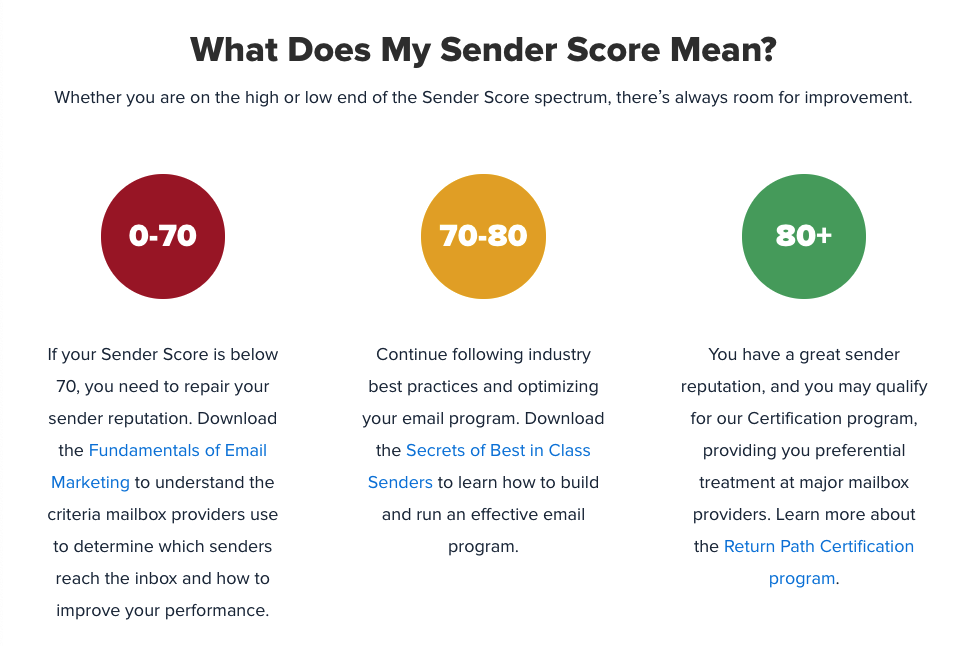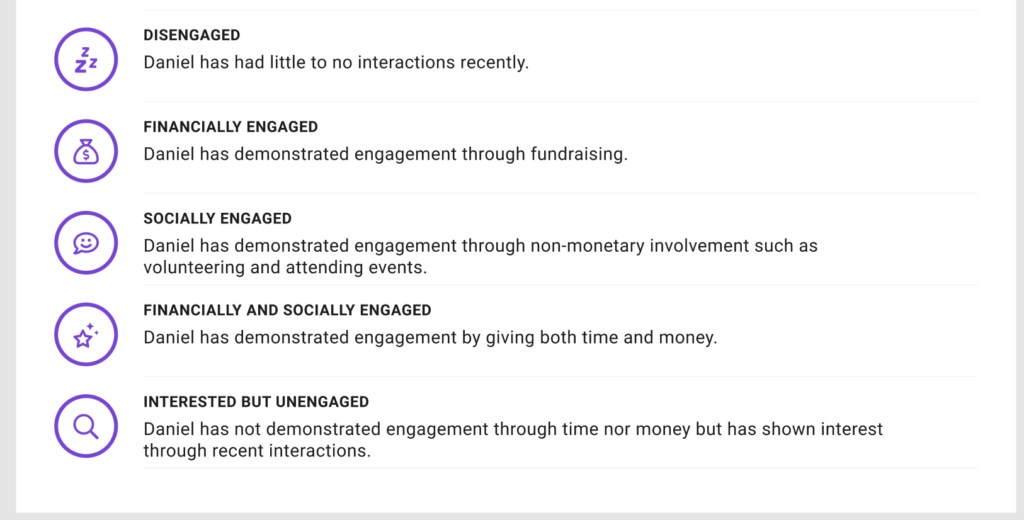How to Improve Your Nonprofit Email’s Sending Reputation


Your organization could be losing almost 30K in donations per year.
Spam is the bane of many an existence. No, not THAT spam; I mean email spam: junk mail, unsolicited messages, and devious phishing.
Fortunately, SPAM filters exist to identify and redirect those unwanted emails into folders far away from our pristine inboxes.
But what happens when the genuinely thoughtful, relevant, and requested emails from your nonprofit organization find their way into the spam folders of your constituents?
Nothing good.
And the practice is far more common than you may realize.
Did you know that a quarter of nonprofit emails end up in spam folders?
While this might seem alarming, most nonprofit professionals wringing their hats is the potential monetary loss behind this statistic.
According to a 2018 study, nonprofits with a 100,000-person mailing list that send two fundraising emails per month could lose as much as $29,000 per year – all because one in four emails isn’t making it to a recipient’s inbox. A spam rate of just 1% equals $1,227.73 per year in lost revenue.
Having your nonprofit emails labeled as spam is a serious financial bummer.
To be sure, the above study features a whale of an email list. And while not every nonprofit will have its own Moby Dick, the principles still ring true no matter what stage of growth your nonprofit journey is at.
Having a quality email-sending reputation is all the more important when you’re just starting.
This begs the question: How?
The answer: It’s complicated 🙂 but we’re here to simplify it!
Firstly, there are the technical aspects. While lingo-heavy and complex, they are the faster fixes and more in line with a ‘set it and forget it’ mentality. Follow these steps once, and you’ll never have to touch these settings again.
Secondly, the personal touch driving opens, clicks, and replies. The engagement gold every email strives to mine.
Identify and Track Your Nonprofit’s KPIs
Use this FREE Toolkit to learn what it means to be data-driven and get access to a master list of fundraising KPIs for your nonprofits


Postage Paid: Email Deliverability
Let us begin with the journey of an email.
Once you have segmented your list and personalized the copy, you’re all ready to hit the send button, and whoosh, away it goes. But… where does it go?
Does it enter the ether in the precious milliseconds between clicking send and the ping of a recipient’s email notification? The cloud? The matrix?!
Understanding this journey will help give a sense of the components of the email you need to know to increase your sending reputation and thus ensure your emails land where they are meant to.
Much like a traditional letter with a sender address, a return address, and a stamp signifying postage paid, an email includes similar deliverability details.
And the journey is not too dissimilar either. The letter goes from a mailbox to the post office, where it is sorted and sent to another post office, then delivered to the recipient’s mailbox.
Unlike your PO box or mail slot, which does not differentiate between the flyers and the cheques, the online version has more sorting features to determine just where it will go.
Technical Aspects
When an email goes on its merry way, you remain blissfully unaware of the detective work going on behind the scenes. The powers that be will assess whether your email is assigned correctly with the right domain and IP.
Email Content
Then its content is checked for profanity, spam, or promotional content before it clears spam filters and ends up in your inbox. All this in the space of a few seconds.
So, the next time you send an email to yourself and get annoyed it doesn’t come through instantaneously, think about how hard your email is working to protect you!
Sending Reputation
The last factor is, of course, the crux of what this article is all about: the sender’s reputation.
Your sender’s reputation is a score assigned out of 100 to you, the sender, based on the quality (and quantity) of your email campaigns. Depending on how your previous emails have performed (if you’ve been flagged as abuse, spam tramps, volume, blacklisted, etc.) it will determine the success of your future ones.


This is where the engagement component comes into play as well. The more people that open and engage with your emails, like clicking on your links, or donating to your fundraiser, the more trusted you’ll be in the eyes of the ever-present interweb police.


10 Steps To Increase Your Sending Reputation
So, if you want to make sure your emails are arriving at their intended destination and staying out of the intended spam folder, you’ll need to increase your email reputation. Follow these helpful steps.
1) Check Sender’s Reputation
The first step is to figure out what your current sender score is. You can do this online using a service like SenderScore. It’s important to stay on top of this score as the lower the score, the harder it’ll be to send emails. In fact, 83% of the time an email is not delivered to an inbox, it is due to a poor sender reputation.
And, when your fundraising revenue relies on a successful email campaign, this can be a real challenge.
2) Verify Your Contacts
If your emails are consistently getting flagged by your supporters, are you sure they want to be receiving them in the first place?
Using an opt-in, or even a dual opt-in to verify email addresses depending on whether you comply with CAN-SPAM or CASL regulations helps fine-tune your mailing list to ensure your recipients know who you are, know what you plan to send, and are expecting it in their inbox.
This will help boost your engagement and lift your sending reputation.
Here are some contact list no-nos.
- Do not purchase email lists: Trust us, it’s never a good idea and will always harm more than it helps.
- Do not take random emails you found online and add them to your mailing list. You aren’t doing them a favor.
- If someone passes along an email address, don’t add it to your mailing list, even if you know them, until you have their digital permission. You can create your own contact lists and find the email addresses of the people that are potentially interested in your business through LinkedIn or other social media networks.
3) Ask To Be White-labeled
It could be that your constituents may not know that your emails are being marked as spam.
Filters or firewalls for corporate offices could be blocking your message and none would be the wiser. Ask your supporters to add your email to their address book, or mark it as safe.
You can do this right after making the first contact by including it as a part of your welcome series. Invite them to add you to their safe sender list. It’s quick, it’s easy, and it’s another way of building a relationship with your prospective donors.
4) Clean Your Mailing List
Regularly cleaning your donor list is one of the most important things you can do if you rely on email marketing for your organization. And while purging might be hard (but maybe they’ll donate again!) having a heap of invalid email addresses and unengaged contacts can hurt your engagement rates as well as your deliverability.
If you have a large number of recipients who haven’t opened your nonprofit’s emails for a long period of time, you can send them a re-engagement campaign, otherwise, it’s time to say bye-bye.
Keela will automatically flag invalid email addresses to protect your sending authority. When an email address produces a hard bounce, they are automatically blacklisted in our system. That means they won’t be able to receive any more emails from your account.
Plus, our contact badges will easily show you who is engaged with your organization and who could use a little more love.


5) Make Sure You’re Compliant
All of your organization’s emails MUST have:
- An unsubscribe link
- The name of the sender (you)
- A physical address and contact number
- And the reason why you are receiving these emails
A footer is a great place to house this information and is considered best practice across the email marketing verse.
6) Send From A Personal Email Vs. A Generic One
You’re trying to build a long-lasting relationship with your supporters and steward them through the donor journey. The last thing they’re going to want is an update on campaign progress from fundraising@yourorganization.
They’re more likely to ignore or discard it. However, if you send it from priya@savethewhales, this lets people know there is a real person they can reply to on the other end of the line, allowing them to build a personal connection with both you and your cause.
7) Reduce Your Email Size
While it might be tempting (and easier) to plaster in the full-size images right from your camera, those large file sizes could hamper your email deliverability. Think of a fully-loaded truck and trailer trying to keep up with cars on the highway. A weighted-down email is much the same. It’s going to be sluggish moving through the space-time continuum.
Not to mention most spam filters will take into account the size of your email. The longer it takes to load, the more likely it’ll be marked as unsafe. We’re not saying don’t use images, just make sure they’re properly resized first.
This also extends to links and attachments.
8) Segment Your Audience
We cannot say this enough. S E G M E N T A T I O N is the key to success.
Many nonprofits are guilty of using one mailing list and blanket sending their message out to everyone and their mothers. Stop. If someone signs up to be a volunteer, how likely is it they want to receive information on planned giving?
One way to avoid sending the wrong message is to set up multiple mailing lists. By segmenting your audience, you’re more likely to send them relevant content that won’t be reported as spam.
Improve Your Email Metrics By Writing Better Subject Lines
Watch this on-demand webinar to learn five proven mental levers that you can easily implement in your subject lines to increase opens and donations.
9) Avoid spammy-sounding subject lines
Did you know 47% of people open emails based on the subject line alone? And at the same time, 69% of email recipients report emails as spam based solely on the subject line.
No pressure.
Writing a good subject line is a mixture of science, optimism, and luck. But there are a few best practices to ensure your email is opened.
- Avoid all caps and symbols. Would you open an email that said “>>> DONATE NOW!!! <<<”? Plus spam filters hunt down and block emails that use excessive punctuation. I’m looking at you, Karen !!!
- Avoid clickbait. While overselling your content might seem like a good strategy to increase your open rates, it’s also going to increase your irrelevancy. If your supporters aren’t getting value from your emails then they’re going to stop opening them.
- Avoid trigger words. Words like “free”, “buy” or “money” are automatic red flags for email filters. While you’re likely not using them in your communications, it’s best to know what words not to use. Here’s an exhaustive list of spam trigger words
10) Use A Credible Email Marketing Provider
Improve your donor communications using Keela’s powerful, intuitive email marketing platform.
With over 1 million fundraising emails sent from within our software, we help our users maintain healthy sending reputations by using Intelligent contact insights to send emails at the right time, to the right donors. Plus, you can track the performance of every email to ensure they’re being opened, read, and kept out of spam filters.
You’re never going to completely avoid getting caught in a spam filter. But if you make sure the emails you’re sending follow GDPR, CAN-SPAM, or CASL regulations, and as many of the best practices listed above, then that will go a long way in boosting your email deliverability rate and sending reputation while bringing in donation dollars that would have otherwise been lost to the dreaded spam.
11) Improve the Quality of Your Nonprofit Email’s Content
Though there are many technical missteps to avoid, the most significant factor in whether or not a recipient marks your email as spam is the content of the email. Ensure your email content is relevant, well-designed, and visually appealing.
Send Personalized, Compliant Emails using Keela
Get a glimpse of how Keela’s suite of email marketing tools can help build and send engaging emails to your donors and supporters.


